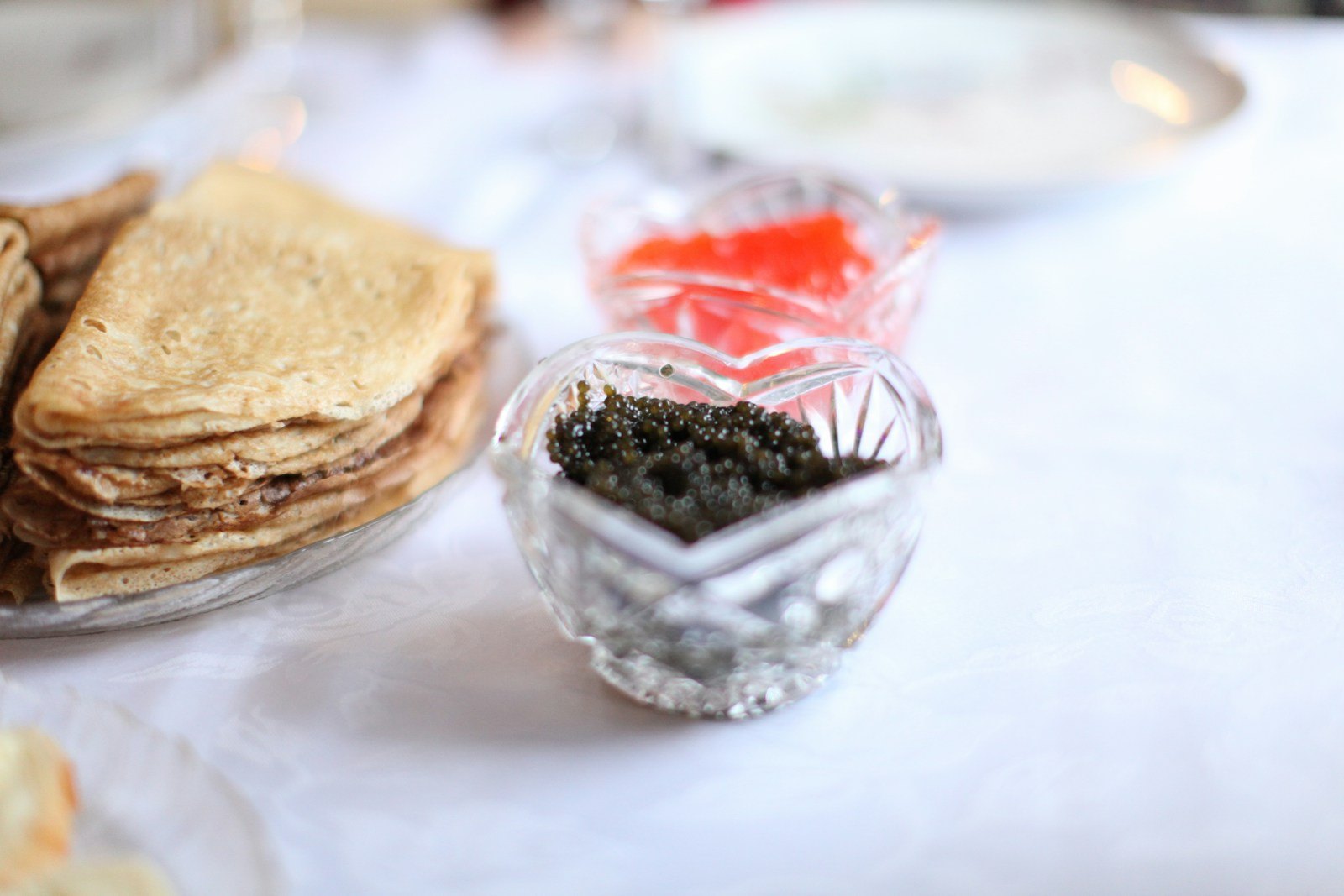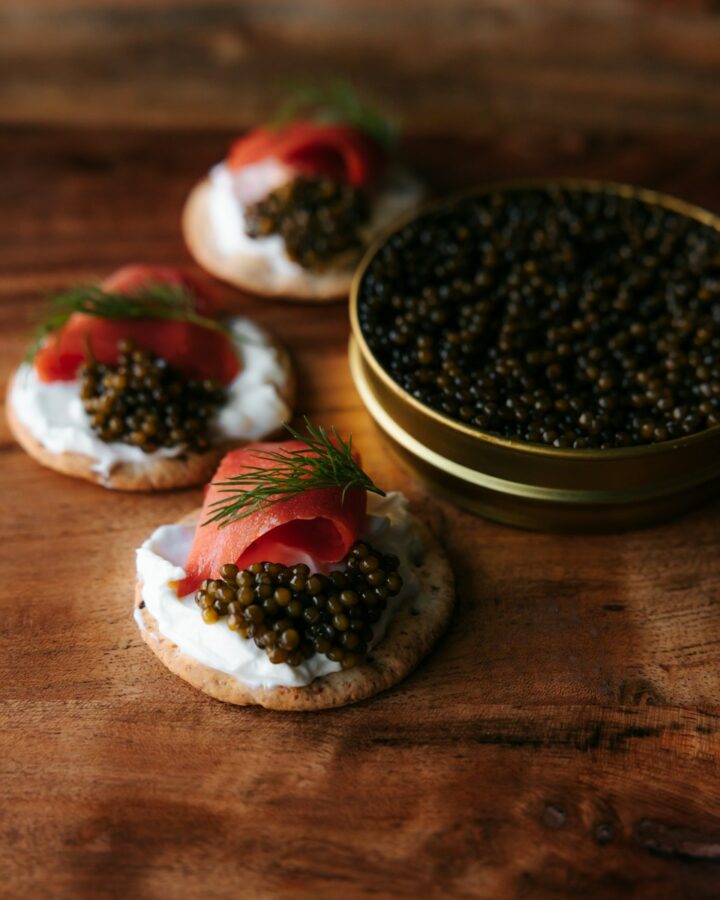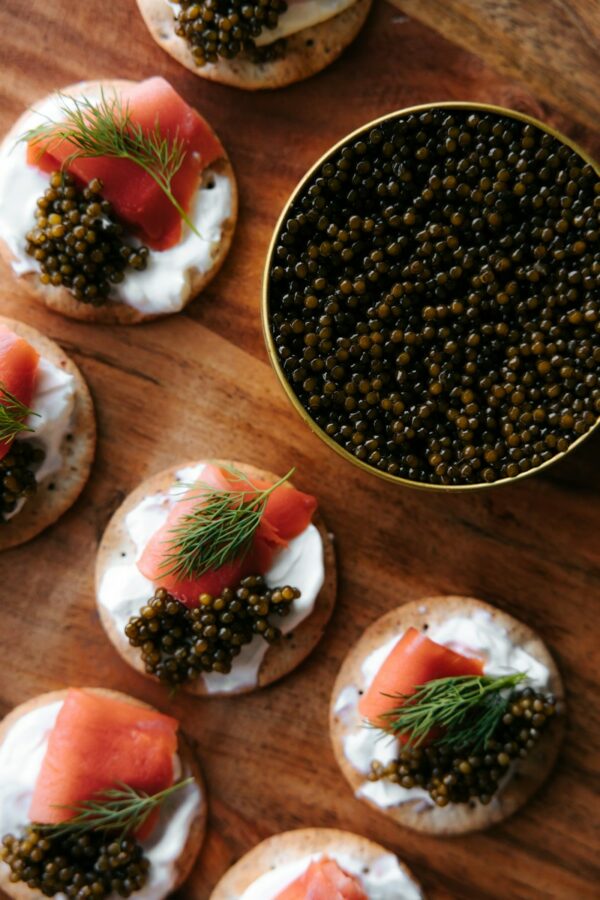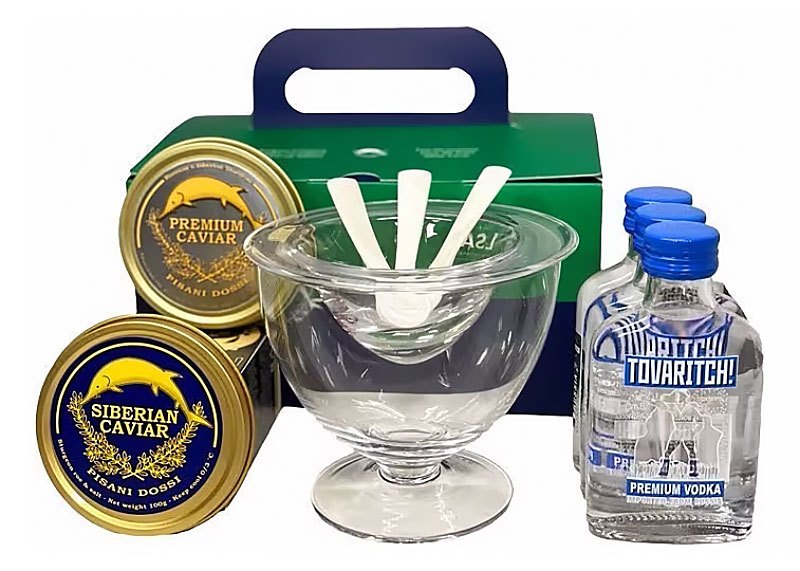For those venturing into the world of gourmet delicacies for the first time, caviar represents an epitome of refined taste and sophistication. This guide aims to demystify the experience, offering insights into selecting, tasting, and appreciating this luxurious item. With a focus on accessibility and enjoyment, the journey into caviar tasting becomes an inviting exploration rather than an intimidating endeavor. Whether it’s understanding the subtle differences between varieties or learning the etiquette of serving and savoring, this guide serves as a comprehensive introduction to the world of caviar, ensuring a memorable first experience.
Caviar, traditionally known as the salted eggs of sturgeon fish, is celebrated for its unique texture and sophisticated flavors. This delicacy has roots deep in history, cherished by ancient civilizations for its rarity and considered a symbol of luxury and opulence. Over time, caviar has maintained its stature as a gourmet staple, transcending cultural and culinary boundaries to become a sought-after indulgence in modern gastronomy. Its appeal lies not only in its rich taste but also in the artistry involved in its preparation and presentation, making it a timeless symbol of culinary excellence. For a deeper exploration of caviar’s history and appeal, further reading is recommended.
Types of caviar
Caviar, a symbol of luxury and culinary sophistication, comes from the roe of sturgeon fish. This delicacy is appreciated worldwide for its unique flavor, texture, and rarity. The most esteemed types include Beluga, Osetra, and Sevruga, each offering a distinct gourmet experience.
Overview of common caviar types: Beluga, Osetra, Sevruga.
Beluga Caviar is often considered the most prestigious. Harvested from the Beluga sturgeon, this variety is renowned for its large, soft eggs that provide a creamy texture and a subtle, buttery flavor. The eggs are usually light gray, and their size can be as large as a pea, making them the most visually striking of all caviar.
Osetra Caviar comes from the Russian sturgeon. It’s known for its rich and nuanced flavor, which can vary from nutty to fruity, depending on the sturgeon’s diet. The eggs are medium-sized and can range in color from deep brown to gold. Osetra caviar is highly valued for its firm texture and the delightful popping sensation it delivers.
Sevruga Caviar, derived from the Sevruga sturgeon, features the smallest eggs but packs a powerful flavor punch. It’s characterized by its intense, salty-fish taste and a smooth texture that many connoisseurs adore. The eggs are typically gray in color and offer a more pronounced flavor compared to Beluga and Osetra.
Key differences and what makes each unique.
The primary distinctions among Beluga, Osetra, and Sevruga caviars lie in their taste, texture, and egg size, influenced by the species of sturgeon, water conditions, and diet.
- Beluga stands out for its large, silky eggs and delicate taste, offering a luxurious experience that’s unparalleled in the caviar world.
- Osetra provides a diverse flavor profile and a firm, satisfying texture, making it a versatile choice for caviar enthusiasts looking to explore different taste nuances.
- Sevruga offers an intense flavor with a fine, buttery texture, appealing to those who prefer a more robust caviar experience.
These varieties cater to a broad spectrum of preferences, allowing both novices and seasoned caviar aficionados to find a type that resonates with their palate.
Selecting your first caviar
Selecting your first caviar is an exciting step into the world of gourmet foods. When choosing caviar, especially for those new to this delicacy, it’s essential to consider factors such as type, taste, and texture. For beginners, Osetra Caviar and Siberian Sturgeon Caviar are excellent choices due to their distinctive flavors and accessibility.
Tips on choosing the right type of caviar for beginners.
For those starting their caviar journey, Osetra Caviar is highly recommended. It is known for its nutty and slightly fruity flavor, which can vary depending on the sturgeon’s diet, making each tasting experience unique. Siberian Sturgeon Caviar is another suitable option, offering a milder taste with a smooth texture, making it a less intimidating choice for first-timers.
When selecting caviar:
- Start with smaller quantities to explore different types without a significant investment.
- Consider the source to ensure the caviar’s freshness and quality.
- Look for reputable suppliers with transparent practices.
Considerations for quality and sustainability.
Quality and sustainability are crucial when purchasing caviar. High-quality caviar should have a clean, fresh smell, and the eggs should be intact and glossy. Sustainability is equally important, as overfishing and environmental concerns have threatened sturgeon populations.
When assessing quality and sustainability:
- Check for certification from bodies like CITES to ensure the caviar is sourced responsibly.
- Research the farm or supplier’s practices to confirm they adhere to ethical and sustainable methods.
- Pay attention to packaging and storage information to guarantee the caviar’s freshness and integrity.
Choosing caviar with these considerations in mind not only enhances the tasting experience but also supports the preservation of sturgeon species for future generations.

Proper caviar storage and handling.
When it comes to luxury delicacies like caviar, ensuring proper storage and handling is paramount to maintain its exquisite taste and quality. This section delves into the critical aspects of caviar care, from the moment of purchase to the point of tasting. The goal is to preserve the delicate balance of flavors and the integrity of the caviar beads, ensuring an unparalleled tasting experience. Attention to detail in storage and handling not only extends the shelf life of caviar but also protects its nutritional value and sensory properties, making every tasting occasion as memorable as the first.
How to store caviar before tasting.
Storing caviar properly before tasting is crucial for preserving its freshness and delicate flavor profile. Follow these guidelines to ensure optimal preservation:
- Refrigeration: Always store caviar in the coldest part of the refrigerator, ideally at temperatures between 28°F and 32°F. Avoid freezing, as it can damage the delicate texture of the eggs.
- Original Packaging: Keep the caviar in its original packaging until ready to serve. Most caviar comes in sealed tins or jars, specifically designed to protect its quality.
- Airtight Containers: If the original packaging has been opened, transfer the caviar to an airtight container to prevent oxidation and contamination.
- Minimal Exposure: Limit the caviar’s exposure to air by covering the container with plastic wrap before sealing it with a lid. This helps to preserve its freshness and flavor.
- Short-Term Storage: For short-term storage, placing the caviar on a bed of ice in the refrigerator can help maintain the ideal temperature, especially if the fridge tends to run warm.
By adhering to these storage principles, the caviar maintains its quality, ensuring a premium tasting experience.
Handling tips to preserve freshness and flavor.
Handling caviar with care is essential to maintain its integrity and exquisite taste. Consider the following tips to preserve its freshness and flavor:
- Utensils: Use non-metallic utensils, such as mother of pearl, glass, or plastic spoons, to serve caviar. Metal utensils can react with the caviar, altering its taste.
- Serving Temperature: Caviar should be served chilled to maintain its flavor profile. Remove it from the refrigerator just before serving and keep it on ice during consumption.
- Gentle Handling: When serving caviar, handle it gently to avoid crushing the delicate eggs. Use a soft touch when spreading it on blinis or crackers.
- No Cross-Contamination: Ensure that the caviar does not come into contact with strong-smelling or tasting foods before serving, as this can impact its flavor.
- Limited Exposure: Keep the caviar exposed to air for the shortest time possible. Once opened, caviar should be consumed within 24 to 48 hours for optimal freshness.
By following these handling guidelines, the caviar‘s freshness and nuanced flavors are preserved, enhancing the overall tasting experience.

Caviar tasting etiquette.
When delving into the world of caviar, understanding the nuances of tasting etiquette can significantly enhance the experience. This section explores the refined practices associated with caviar tasting, from the selection of proper utensils to the artful presentation and savoring of this exquisite delicacy. Adhering to these guidelines not only respects the tradition and craftsmanship behind caviar production but also maximizes the enjoyment of its unique flavors and textures, making the first tasting a memorable and sophisticated affair.
The right utensils to use.
The choice of utensils plays a pivotal role in the caviar tasting experience, as the wrong materials can alter the flavor of the caviar. To ensure the purity of taste, consider the following recommendations:
- Mother of Pearl Spoons: Ideal for caviar, these spoons do not react chemically with the delicate eggs, preserving their natural flavor.
- Glass or Plastic Utensils: As alternatives to mother of pearl, glass or plastic utensils are suitable for serving and tasting caviar, avoiding the metallic taste that can be imparted by metal spoons.
- Bone or Horn Spoons: Although less common, these materials are also non-reactive and can be used for an authentic tasting experience.
Avoid using silver, stainless steel, or any other metal utensils, as they can oxidize the caviar and impact its taste. The right utensil ensures that the first impression of caviar is as intended by the connoisseurs.
How to serve caviar for tasting.
Serving caviar for tasting is an art that combines tradition with a touch of personal flair. To create an unforgettable experience, follow these guidelines:
- Presentation: Serve caviar in its original tin or transfer it to a glass or crystal serving dish. Placing the serving dish over ice helps maintain the optimal temperature without compromising the caviar‘s texture.
- Accompaniments: Offer traditional accompaniments that complement, rather than overpower, the caviar. Options include blinis, toast points, crème fraîche, and chopped hard-boiled eggs. Each element should be served separately, allowing guests to create their own combinations.
- Portion Size: A small amount of caviar is sufficient for tasting, as its flavors are intense and rich. A spoonful per guest is a good starting point.
- Sequence: If serving multiple types of caviar, start with the milder varieties and progress to the more robust flavors to appreciate the range of nuances.
By carefully considering the presentation and accompaniments, the serving process respects the integrity of the caviar while offering a personalized tasting journey.
Tasting caviar: The experience.
Tasting caviar is more than just eating; it’s an experience that engages all the senses. To fully appreciate its complexity, consider the following steps:
- Visual Inspection: Observe the caviar‘s color and luster. High-quality caviar should have a glossy appearance with clear, distinct eggs.
- Aroma: Gently inhale the aroma of the caviar. It should have a fresh, clean scent reminiscent of the sea, without any overpowering fishiness.
- Texture: Place a small amount of caviar on your tongue and feel the texture. The eggs should be firm yet delicate, bursting gently to release their flavor.
- Taste: Savor the caviar slowly, allowing it to coat your palate. High-quality caviar will have a balanced flavor profile, with a blend of buttery, nutty, and briny notes.
- Finish: Pay attention to the aftertaste. The flavors should linger pleasantly, inviting further exploration.
Approaching caviar tasting with mindfulness and appreciation allows for a deeper understanding and enjoyment of this luxurious delicacy, making the first experience truly unforgettable.
How to prepare your palate.
Preparing the palate is an essential step before embarking on the caviar tasting journey. This preparation ensures that the taste buds are sensitized to the subtle nuances and rich flavors of caviar. Begin by cleansing the palate with a sip of still water or a small serving of plain bread or unsalted crackers. This neutralizes any residual flavors from previous meals or beverages, providing a clean slate for tasting. Additionally, abstaining from strongly flavored foods, beverages, and smoking for several hours beforehand can help enhance the sensitivity of the palate, ensuring an optimal tasting experience. The aim is to ensure that the palate is as receptive as possible to the delicate and refined flavors of caviar, making the first taste a truly memorable one.
The process of tasting and savoring caviar.
The process of tasting and savoring caviar is a delicate art that involves engaging all the senses to fully appreciate its complexity. Follow these steps to ensure a complete tasting experience:
- Visual Appreciation: Begin by observing the caviar‘s appearance. Note the size, shape, and color of the eggs, which can vary significantly depending on the type of caviar.
- Aroma: Gently smell the caviar without disturbing it too much. The aroma should be fresh and subtle, evoking the essence of the sea.
- Taste Preparation: Place a small amount of caviar on a non-metallic spoon. This ensures that the flavor is not altered by the utensil.
- Initial Taste: Allow the caviar to rest on the tongue for a moment before tasting. Notice the initial burst of flavor as the eggs pop.
- Flavor Exploration: Move the caviar gently across the tongue to explore the full range of flavors. Good quality caviar will have a complex profile, with hints of nuttiness, creaminess, and a delicate oceanic taste.
- Finish: Pay attention to the aftertaste. High-quality caviar leaves a clean, lingering finish that invites further exploration.
This mindful approach to tasting allows for a deeper appreciation of caviar‘s unique qualities, making each tasting a nuanced experience.
Pairing caviar with drinks and food.
Pairing caviar with the right drinks and food can enhance the tasting experience, complementing and elevating the flavors. Consider these pairing suggestions:
- Champagne: The crispness and effervescence of a quality Champagne or sparkling wine can cleanse the palate between bites, enhancing the caviar’s richness.
- Vodka: A traditional pairing, chilled vodka complements caviar by cutting through the richness without overpowering its delicate flavors.
- Light, Dry Wines: Choose light, dry white wines with high acidity to balance the caviar’s saltiness and richness.
- Neutral Accompaniments: Serve caviar with mild, neutral-flavored accompaniments like blinis, lightly toasted bread, or unsalted crackers. These provide a texture contrast without competing with the caviar’s flavor.
- Minimal Garnishes: If using garnishes, opt for minimal and subtle options like crème fraîche, finely chopped chives, or a squeeze of lemon. These can enhance the caviar without overshadowing its natural taste.
By carefully selecting pairings that complement rather than compete with caviar, the tasting experience becomes more harmonious and enjoyable, allowing the caviar to shine as the centerpiece of the culinary experience.

Recommended pairings for enhancing the tasting experience.
Selecting the right pairings is essential for enhancing the caviar tasting experience. The goal is to complement the caviar’s unique flavors without overwhelming them. Light, subtle flavors work best, as they allow the caviar to take center stage. Ideal beverages include chilled vodka or a crisp, dry Champagne, which cleanse the palate and highlight the caviar’s richness. For food pairings, opt for simple, unflavored bases like blinis, unsalted crackers, or lightly buttered toast points. These provide a neutral backdrop for the caviar. When adding accompaniments, choose mild options like crème fraîche or a light squeeze of lemon to enhance rather than mask the caviar’s flavor. By carefully selecting pairings that harmonize with the caviar, the tasting becomes a more refined and enjoyable experience.
What to avoid in pairings.
While certain pairings can elevate the caviar tasting experience, others can detract from its delicate flavors. Here are some key elements to avoid:
- Strong Flavors: Avoid pairing caviar with foods that have strong, overpowering flavors, such as garlic, onions, or spicy ingredients. These can overwhelm the subtlety of the caviar.
- Metal Utensils: Metal spoons or serving dishes can react with the caviar, altering its taste. Opt for utensils made of non-reactive materials like glass, plastic, or mother of pearl.
- Heavily Seasoned Accompaniments: Overly seasoned or salted crackers, chips, or bread can compete with the caviar’s natural salinity and complexity.
- Complex Wines: While some wines pair well with caviar, overly complex or oaky wines can overshadow the caviar’s delicate flavors. Stick to light, dry, and crisp wines.
- Room Temperature Beverages: Serve beverages chilled to complement the cool, fresh nature of caviar. Warm or room temperature drinks can diminish the refreshing contrast that enhances the caviar experience.
By avoiding these common pitfalls, the integrity of the caviar’s flavor profile is preserved, ensuring a more authentic and enjoyable tasting.
Common myths about caviar.
Several myths surround caviar, which can lead to misconceptions about this luxurious delicacy. Clarifying these can enhance appreciation and enjoyment:
- Myth: Caviar is best served as a standalone dish. While caviar can be enjoyed on its own, pairing it with the right accompaniments can actually enhance its flavors.
- Myth: All caviar tastes the same. The flavor of caviar can vary widely depending on the species of fish, the waters in which it was harvested, and the processing method. Each type offers a unique tasting experience.
- Myth: More expensive means better quality. While price can be an indicator of rarity, it doesn’t always correlate with personal preference. Tasting different types of caviar can help identify personal favorites, regardless of price.
- Myth: Caviar should be served in large quantities. Due to its rich and intense flavor, caviar is best enjoyed in small quantities. This allows the palate to appreciate its complexity without becoming overwhelmed.
Dispelling these myths encourages a more open and informed approach to caviar tasting, leading to a more enjoyable and personalized experience.
Embarking on the journey of caviar tasting is an exquisite exploration of culinary sophistication and refined taste. Understanding the nuances of storage, handling, etiquette, and pairings enhances the appreciation of this luxurious delicacy. For those seeking an unparalleled tasting experience, selecting premium caviar is essential. PremiumCaviar shop offers a curated selection of the finest caviar, ensuring each tasting is not only a moment of indulgence but a memorable foray into the world of gourmet luxury. Elevate the tasting experience by choosing premium caviar for an encounter with excellence in taste and quality.


